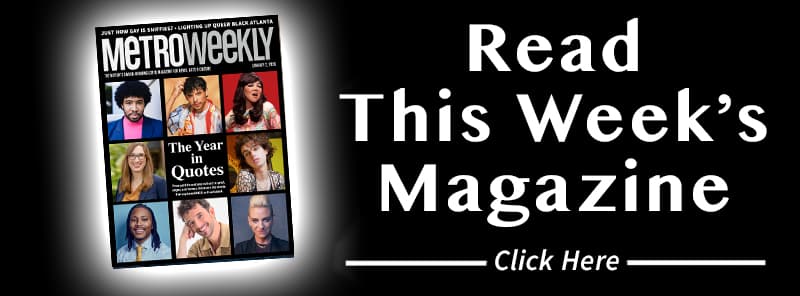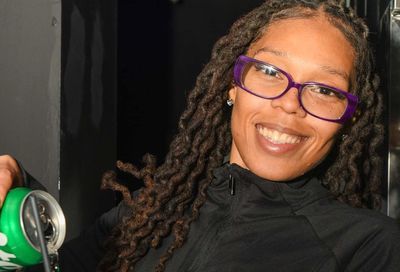Candyman review: A lot to say, but not enough scares holding it all together
Candyman updates the 1992 horror film with astute social commentary, but contains more style than suspense

Say his name five times staring into a mirror, and he’ll come for you. Fairly quickly, too, as most victims in Candyman (★★☆☆☆) don’t have to wait long before the mythical boogeyman materializes to dig his hook into whomever should be so bold as to summon him.
Historically speaking, and as one character aptly puts it, “Black people don’t need to be summoning shit.” As the film asserts, Black folks have suffered enough pain and degradation over centuries without conjuring up a phantom murderer just for kicks. But, as the film also avers, it’s precisely that bone-deep pain — born of the violence of slavery, massacres, lynching, and inequality — that has created the Candyman, or a need for him.
A specter who haunts stories passed down through generations, he might dwell within the walls of the Chicago housing project he terrorized for years, or be merely a foul figment of collective imagination.
For up-and-coming Chi-town artist Anthony McCoy (Yahya Abdul-Mateen II), his paintings inspired by the Candyman unlock new success and notoriety, while also seeming to summon doom for him, his curator girlfriend Brianna (Teyonah Parris), and others in their circle.
Investigating the legend, Anthony learns from hood griot William (Colman Domingo) that the Candyman seen lurking in reflections the way Freddy Krueger inhabits dreams is likely the long-dead Sherman Fields (Michael Hargrove) — who, like Krueger, was summarily executed for a rash of crimes, real or perceived, against children.

Candyman writer-director Nia DaCosta, along with co-writer-producers Win Rosenfeld and Get Out Oscar-winner Jordan Peele, offer a character mythology that differs completely from the villain’s backstory in Bernard Rose’s 1992 Candyman, based on the Clive Barker short story “The Forbidden.”
However, the new film doesn’t abandon the original storyline and characters, but rather incorporates elements from the 1992 film — including snippets from audio diaries left by Virginia Madsen’s Helen Lyle — into the ever-evolving urban legend.
The film speaks to the value of shared folklore, and the dangers of disinformation. As years pass, and stories are repeated, details may change, facts fade from memory, and the past can be forgotten, misremembered, or deliberately distorted. Perhaps more horrifying than an old wives’ tale about a supernatural killer is the prospect, as depicted in one scene, of police concocting a false story on the spot to explain shooting and killing a man before your eyes.
Brimming with commentary on racial politics and police brutality, class struggle and gentrification, even art-world posers and critics, Candyman weaves disparate threads of subtext and meaning throughout the story without resolving the patchwork into a coherent statement. There’s a lot going on, a lot being said, and not enough scares holding it all together.
Stylishly shot, employing shadow play animation and gruesome make-up effects, the movie doesn’t stint on atmosphere, or blood and gore, but fumbles the rhythm of cat-and-mouse suspense. Often, DaCosta climaxes scare sequences with cool-looking shots that don’t generate any visceral sense of jeopardy.
Of the able cast, Domingo’s performance most assuredly captures that baleful air of ghost stories being told in the flickering light of a fire. And Abdul-Mateen makes a compelling journey of Anthony’s descent into the madness of Candyman’s web. Anthony’s loosening grip on sanity raises the question, as did the ’92 original, of whether the Candyman legend is a story of spiritual manifestation, or of bodily possession.
The Candyman movie most horror fans want to see probably should have more to say about that than about the socio-economic dynamics of Windy City real estate.
Candyman opens Friday, August 27 in theaters everywhere. Visit www.candymanmovie.com.
Read More:
Film Review: Shang-Chi and the Legend of the Ten Rings
Todd Stephens’ gay drama “Swan Song” is his finest work yet
Marion Hill set out to depict a triad relationship honestly in “Ma Belle, My Beauty”
Support Metro Weekly’s Journalism
These are challenging times for news organizations. And yet it’s crucial we stay active and provide vital resources and information to both our local readers and the world. So won’t you please take a moment and consider supporting Metro Weekly with a membership? For as little as $5 a month, you can help ensure Metro Weekly magazine and MetroWeekly.com remain free, viable resources as we provide the best, most diverse, culturally-resonant LGBTQ coverage in both the D.C. region and around the world. Memberships come with exclusive perks and discounts, your own personal digital delivery of each week’s magazine (and an archive), access to our Member's Lounge when it launches this fall, and exclusive members-only items like Metro Weekly Membership Mugs and Tote Bags! Check out all our membership levels here and please join us today!



























You must be logged in to post a comment.